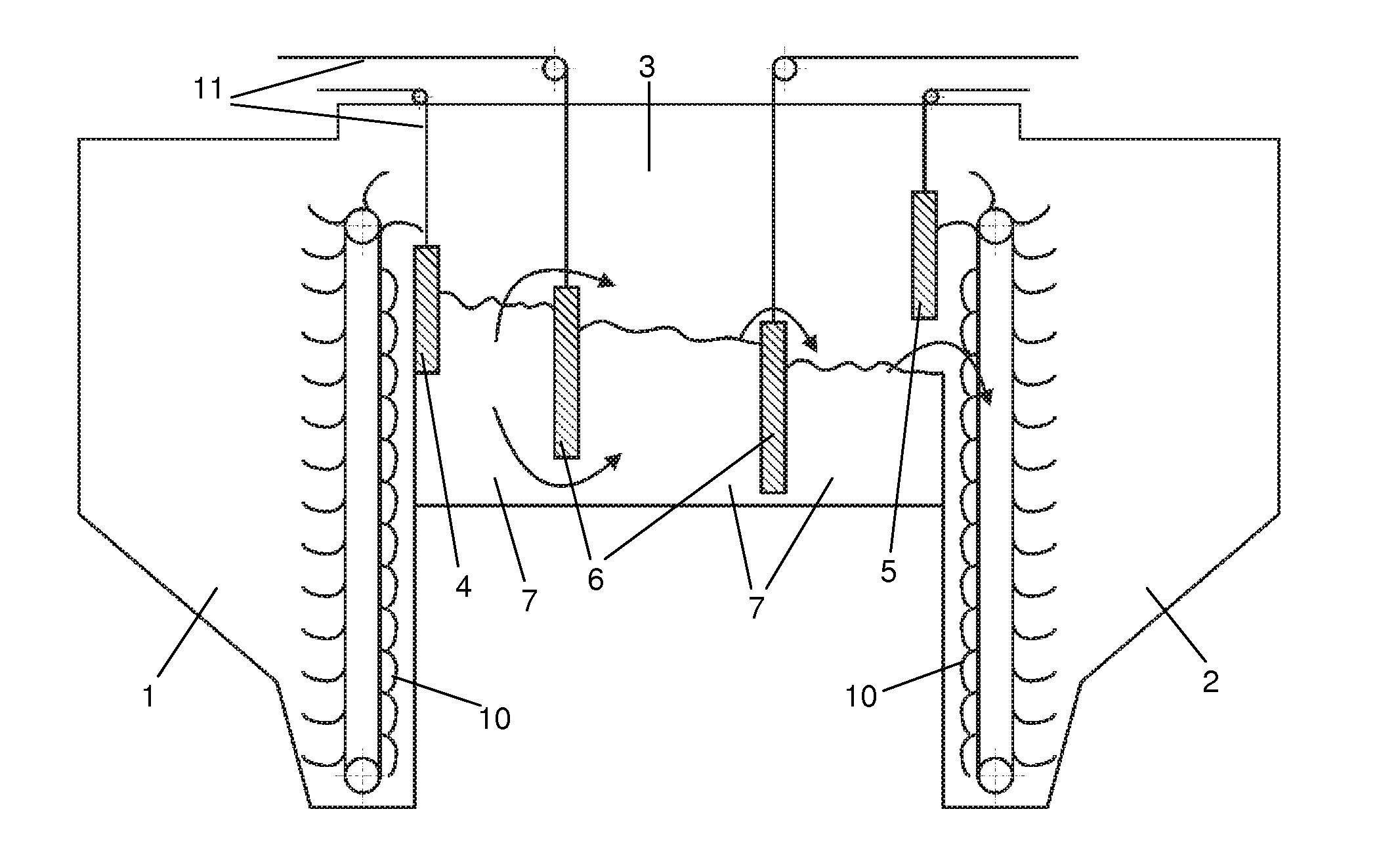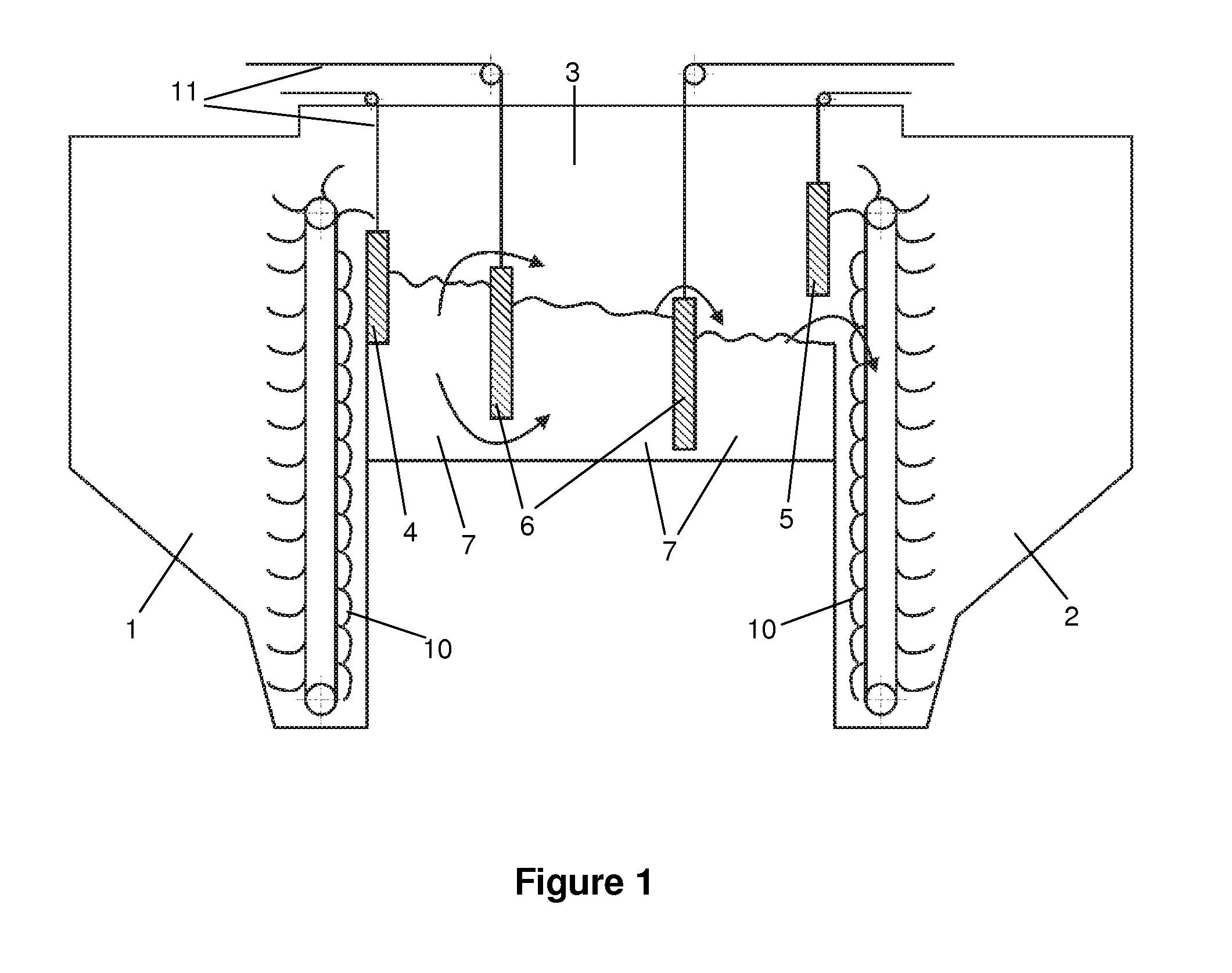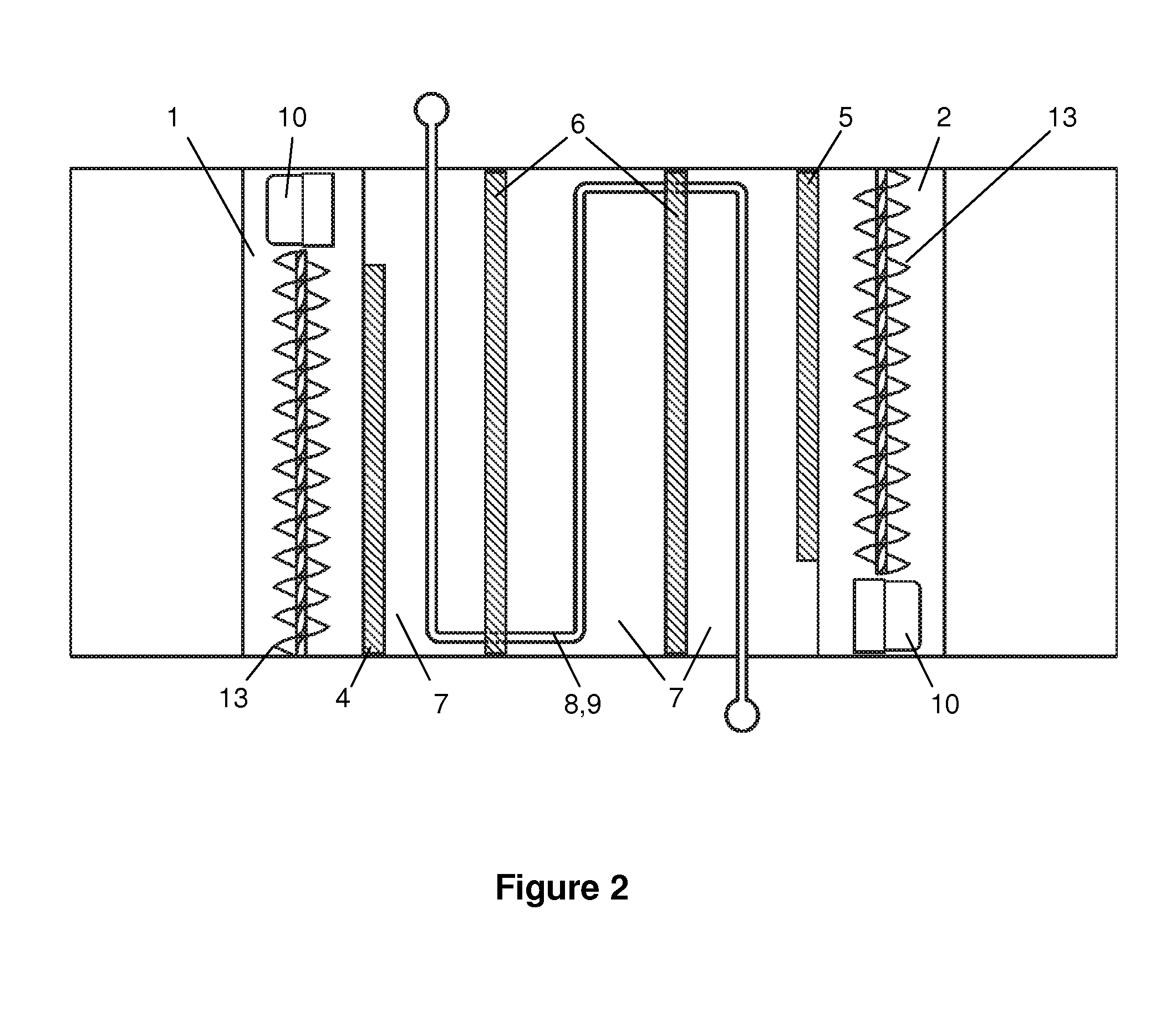Heat storage system
a technology of heat storage and heat exchanger, which is applied in the direction of solar heat storage, indirect heat exchangers, lighting and heating apparatus, etc., can solve the problems of large amount of sand traveling considerable distances, reducing the efficiency of solar power plants, corrosion and abrasion of various components, etc., and achieves the effects of increasing the energy yield of the system, saving energy consumption, and economical design
- Summary
- Abstract
- Description
- Claims
- Application Information
AI Technical Summary
Benefits of technology
Problems solved by technology
Method used
Image
Examples
Embodiment Construction
[0040]The figures schematically show preferred embodiments of the heat storage system of the present invention with vertically adjustable weirs. Of course, these embodiments are not intended as limitation but only serve for an illustration of the invention.
[0041]In FIG. 1, reference 1 indicates a storage tank for cold sand, 2 indicates a storage tank for hot sand, 3 indicates the fluidized bed heat exchanger, which is divided into three chambers 7. The division is achieved by means of two weirs 6, and the delimitation towards the storage tanks 1 and 2 is provided by two weirs 4 and 5. All weirs are vertically adjustable by means of chain or rope hoists 11, and each storage tank comprises a bucket or pan hoister 10 for delivering the sand stored therein. The fluidized bed heat exchanger 3 is fluidized by means of a blower (not shown), which blows a fluidizing medium into the heat exchanger 3 from below in order to create fluidized beds in the chambers 7, the average height of which i...
PUM
 Login to View More
Login to View More Abstract
Description
Claims
Application Information
 Login to View More
Login to View More - R&D
- Intellectual Property
- Life Sciences
- Materials
- Tech Scout
- Unparalleled Data Quality
- Higher Quality Content
- 60% Fewer Hallucinations
Browse by: Latest US Patents, China's latest patents, Technical Efficacy Thesaurus, Application Domain, Technology Topic, Popular Technical Reports.
© 2025 PatSnap. All rights reserved.Legal|Privacy policy|Modern Slavery Act Transparency Statement|Sitemap|About US| Contact US: help@patsnap.com



